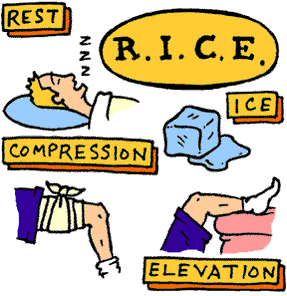On Muscle Pain and Soreness
– A Guest Blog from Vima Mendoza of http://kulitrunner.wordpress.com
Muscle pain and soreness brought about by a certain physical activity or workout is a common conversation topic nowadays especially since many have started getting hooked into an active and healthy lifestyle. Injuries abound too. I have been asked a number of times already, not because I am an expert but because I have in one time been in the injury watch list and for that have received advise on the best remedy for the pain that i felt then. I am sharing with you a few of what I learned eversince I started running in late 2005 until today that I am slowly easing back to running and mt. biking. Read on!
***-***
In feeling the pain, one must to know whether that kind of pain or discomfort is normal with a workout or is really a sign of injury.
.
Delayed Muscle Soreness
The day after a new or hard workout, many of us experience a dull pain and ache in the muscles used. This is normal — it is thought to be caused by very small damage (some say “microscopic) to your muscles and connected tissues. The body repairs this damage and builds stronger muscles and tissues as a result. And because this is so, one must allow a full day of recovery time for the body to be able to do this..
Kulit says:This is the very reason why we are advised to either rest after every workout or runs, or do an exercise that works out a different body part. It is during rest that our body tries to recover.
.
Pain During a Workout
While you are working out, especially if you are lifting weights, your muscles may hurt after several repetitions of an exercise. This is the “going for the burn” that you may have heard weight lifters speak of and is to be expected. A mild, temporary ache of your muscles after a long walk, run, bike, or bout of another cardio exercise is also normal. It should end as soon as you stop doing the activity. If it doesn’t, you could have a strain or injury. Check the danger signs of injury to determine if you should seek treatment.
.
Danger Signs of Injury
If you experience any of the following symptoms, stop exercising immediately and seek treatment:
Sudden, severe pain
Swelling
Extreme tenderness
Extreme weakness in a limb
Inability to place weight on a leg or foot
Inability to move a joint through its full range of motion
Visible dislocation or broken bone
Numbness or tingling — this could be a sign of nerve compression and should especially not be ignored.
.
Muscle Cramps
Muscle cramps often arise when you are exercising and losing fluids and salts through sweating. But if you are new to an exercise, muscle fatigue alone can trigger these involuntary, painful contractions. The cramp will usually force you to stop what you are doing. Find a safe area to gently stretch and massage the cramped muscle until it relaxes.
.
Treatment for Muscle Pain: R.I.C.E.
For any muscle pain, swelling, or inflammation, the R.I.C.E. method can help reduce damage and speed healing:
.
R — Rest: Stop whatever you are doing that is causing the pain. For sprain and strains, take weight off the affected limb. For delayed soreness, rest the sore muscle group for a day.
Kulit says: Be patient. If rest is needed, do take it. I have experienced ignoring the advise to rest and it resulted to not-so-good consequences.
.
I — Ice: Cold therapy will help reduce inflammation and risk of further damage it can cause. It’s important not to expose skin directly to the ice. Wrap ice, or an ice pack, in a towel to apply it indirectly. Ice the area for 10 to 20 minutes, four to eight times a day. Don’t apply ice for more than 20 minutes, or you risk cold damage. Don’t apply heat immediately to an injury, either — this can increase swelling, bruising, or internal bleeding. Heat can be used once healing is progressing, days later, to help relax the muscle.
Kulit says: I usually wrap the ice pack with a “cling wrap” so that i do not have to hold it while in the process. In effect, I still have my hands free to do anything I need or want (like blogging, hehe!).
.
C — Compress: Wrapping the injured limb in a snug elastic bandage can help reduce swelling.
Kulit says: Do not wrap the elastic too tight and for a long period because it will cause swelling. Believe me, it happened to me. lol!
.
E — Elevate: Raise the injured limb above the level of the heart to help reduce swelling.
Kulit says: Just like in compressing, elevating doesn’t have to be done over a long period because it may cause muscle cramps.
.
Kulit’s Note: If the pain/soreness persists after about three days despite applying RICE, the coaches say that this is the time to see a doctor for consultation.
.
Finally, a good workout is definitely a blast but it is still important for us to stay attuned to our bodies. Listen to your body because it will tell you what is enough and what is not. Have a safe workout!










